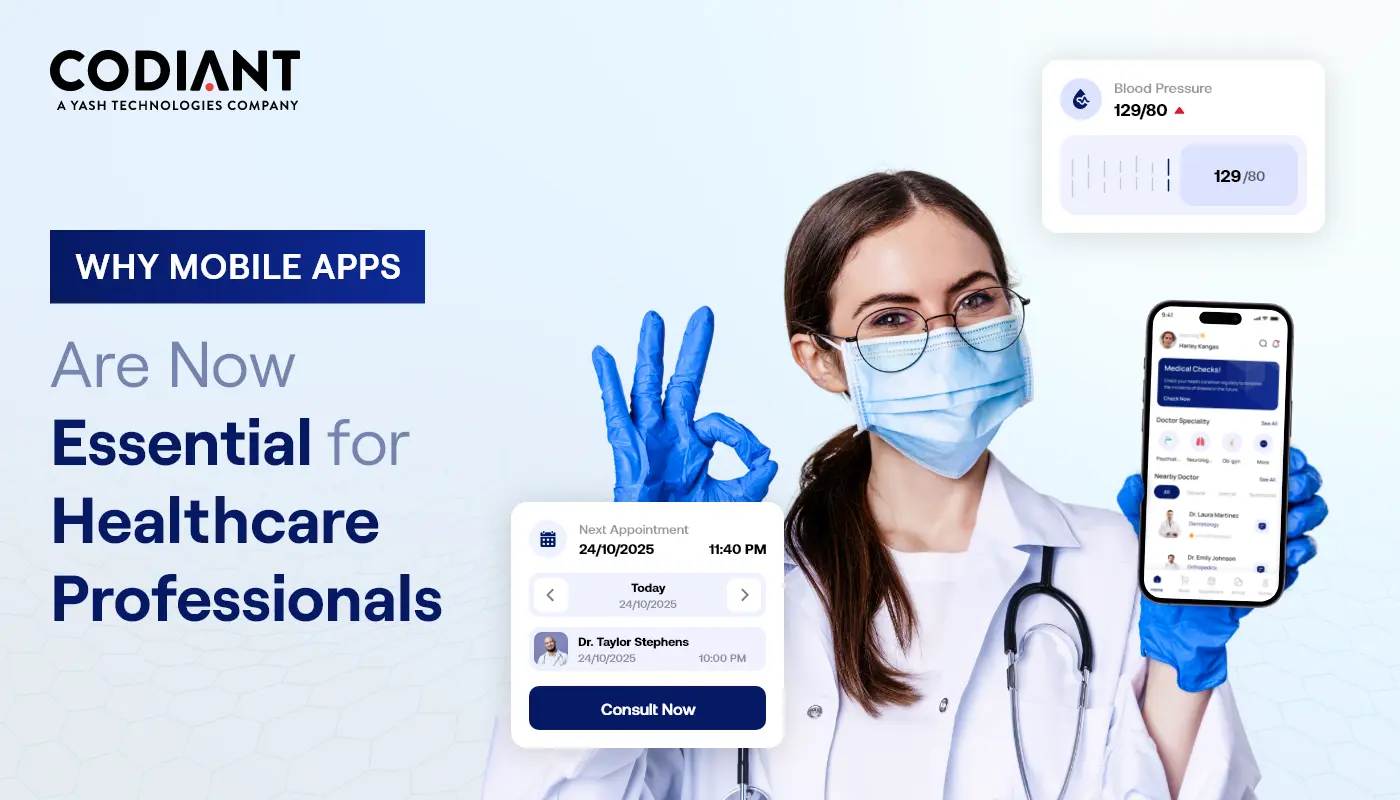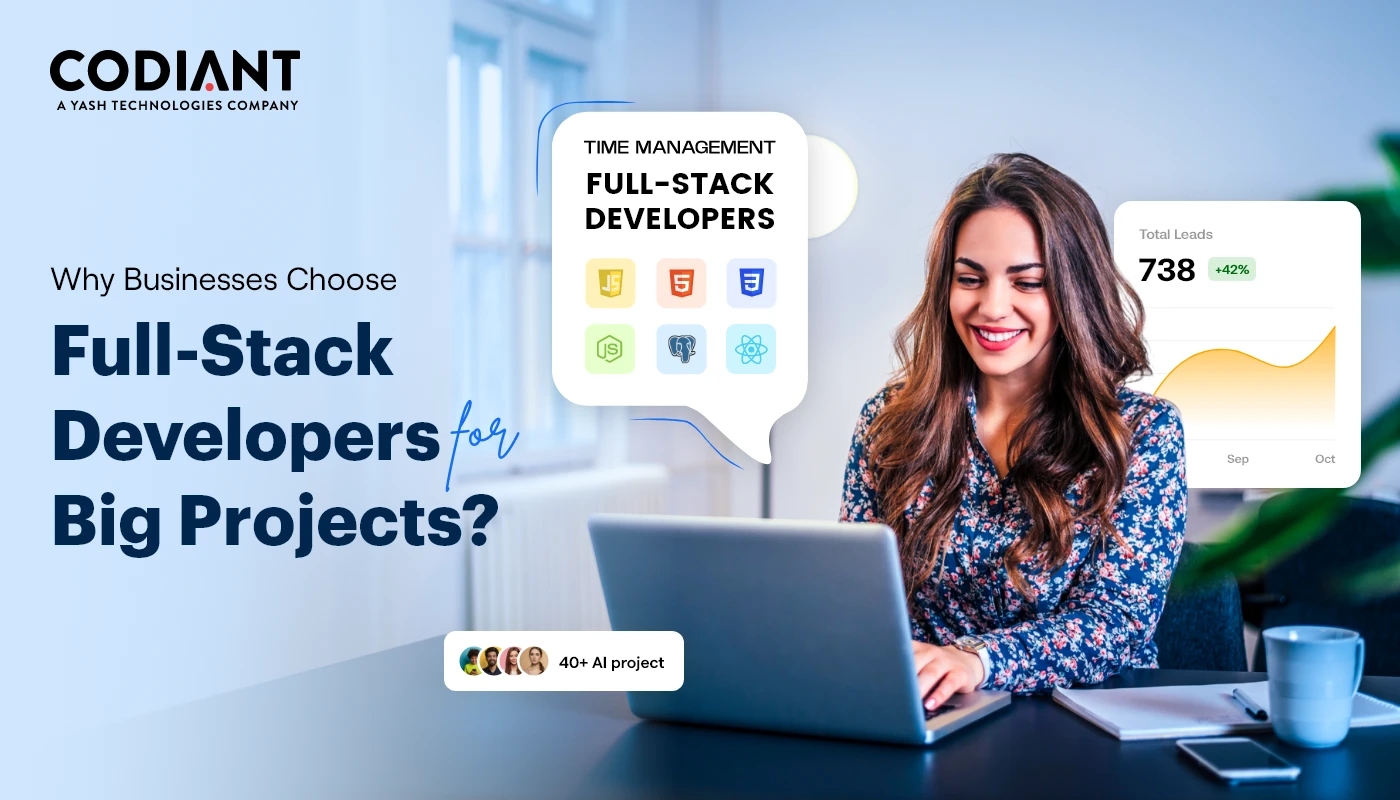What is Digital Transformation & Three Steps to Get Started
Table of Contents
Subscribe To Our Newsletter

Imagine a company ecosystem, “where products and marketing campaigns are launching at record speed, where data and insights are available in a click for rapid adjustments, where results are reflected in a fly, and where uncertainties are faced boldly”. – This is a digitally transformed organization.
Today, companies are looking for a nucleus that gives a ripple effect on all companies’ touchpoints to deliver an unmatched customer experience, to seek a manual that dictates ahead strategy, and to create a prediction model that foresees market opportunities. While COVID-19 has been the accelerator of digital transformation, 79% of companies have admitted that the pandemic has increased the budget and if they do not adapt to digitally transform within a year, the organizations will start to lose business.
What Is Digital Transformation?
Digital transformation means the integration of digital solutions into all areas of the business to fundamentally change organization’s business model and operating model to address and capture new market opportunities and improve customer experience.
While digital transformation looks different and works differently for every industry, the DNA of its process and capabilities applies the same for every company.
Deloitte, explains this definition very well. Digital transformation means “Bringing the real-life experience of transformation as well as digital solutions to support our customers on their transformation journeys”.
In this process, we help companies to move away from the long-standing business process, resist getting comfortable with inefficiencies, and workforce burnouts, and in turn, challenge the status quo and focus on a longer-term horizon. This outside-in transformation helps companies accommodate in uncertain markets of today and the future, and makes them market-ready, and agile enough to make winning moves.
Know Your Customers Better: Here‘s A Digital Transformation and Modernization Guide to Help Your Business Outshine.
Defining the Scope of Digital Transformation
The scope of digital transformation is harnessing the ‘5D’s of Digital’ defined by Dave Chaffey in his book Digital Marketing: Strategy, Planning, and Implementation. The 5Ds outlines the opportunities for customers to interact with the companies and for businesses to reach and learn from their target audiences in different ways:
- Digital Devices –Owing to this reason, visitors connect with brands and companies through their digital assets like websites, mobile apps, and official social media handles- all executing and running through digital devices. Thus, its role can be positioned through a combination of connected devices including smartphones, tablets, desktop computers, and TVs.
- Digital Platforms – A consumer interacts with a brand through its most active digital platforms like mobile app and web and social media handles that’s Facebook and Instagram, Google and YouTube, Twitter, and LinkedIn.
- Digital Media – Digital media includes different Paid, Owned, and Earned Media communication channels for increasing audience reach and engagement including advertising, email marketing, messaging, social media, and search engine optimization.
- Digital Data – The amount of insights businesses generate by collecting information about their visitors, customers, and their interactions with businesses, at a day-to-day level. This can be done by data analytics technologies and techniques. However, this now needs to be protected by law in most countries.
- Digital Technology – The marketing technology or martech stack that businesses use to create interactive experiences from websites and mobile apps to in-store kiosks and email campaigns.
Type of Media | Examples | Why Use It | Pros | Cons |
| Paid – A marketing channel that you pay for to increase traffic. | 1 Display Ads 2. Social Media Ads 3. Search Engine Marketing (SEM) 4. Offline Ads | Paid ads work really well when you are just getting started and nobody knows about you. | • Instant results • Easy to track • Control over message • Easy to target high • intent customers | • Initially expensive • Getting more expensive as competition increases • Easy to get dependent on paid channels |
| Owned – Everything that relies on the direct control of the business. | 1. Your website 2. Content Marketing 3. Social media 4. Email Marketing 5. Word of mouth | With blogs, SEO, and content creation, it’s a lot easier to pull in traffic organically. | • complete control • Costs less • Published directly on your site | • Limited audience • Needs internal maintenance |
| Earned – The word of mouth shared by other people. | 1. Publicity from media outlets 2. SEO 3. Review sites 4. Social media | Higher ROI happens because earned media proves to be cost- effective. | • Increases your credibility • Heightens brand awareness • Expands reach | • Can bring up negative publicity • Takes time and effort • Can be difficult to collect |
Digital Industrial Transformation: The Three-Step Approach

Organizations and companies seeking digital transformation as a growth driver must start from the following three-step approach:
- Defining the playing field: Markets and segments in which they choose to play
- Services and Solutions to offer: Decisions around services, new products, and solutions
- Monetization: Bundling those offerings and solutions to create pricing tiers and a monetization model.
1. Define The Playing Field
Intersection of industry verticals and use cases infused with the outcomes of the outside-in lens defines the play-field of enterprises.
Still, there are brands and enterprises, nascent to determine where to start and how to start; which market segments should they pick and take ownership of. In such cases, where choices are many but the bull’s eye is not clear- an outside-in lens that focuses on fencing those industry verticals and use cases having the greatest market potential calculated on behalf of projected market size, market growth rate, and competitive intensity – come into play.
An outside-in lens, make strategic adjustments to see the future market shifts, risks and uncertainties, and challenges in productivity. It helps companies understand their own abilities in the realm of the current market segment. Their proximity to commercialization of innovation efforts and internal capabilities.
2. Determine the Services and Solutions to Offer
Define Where, What and How on the Land Of Uniqueness
Now once the company has its playing field defined in terms of where to operate, and the market segments, it’s time to distill and narrow down its winning moves. It’s time to decide and introduce their services, new products and solutions with competitive differentiation on the land of uniqueness.
The questions that evolve during this phase are:
- What will you sell? – Like what will be your solution archetype? Will you offer integrated solutions or will you offer services to help deliver and implement your solutions? Trade-off suggests, “Discrete products provide maximum flexibility with near-term revenue potential. Whereas, integrated solutions build a brand with long-term revenue potential”. Next implication, will you target and sell solutions to owners/operators? Or to manufacturers (OEMs)? Trade-off suggests, “Selling solutions to owner/operators to reduce costs may reap only short-term benefits but selling to OEMs may see long-term value-added benefits. “
- How do you sell? What will be your market routes or channel mix? Will you rely on direct sellers or sell-with or sell-through? Trade-off suggests, “Selling direct to customers provides a higher degree of brand and price control, decreases time to market, provides you a goldmine of customer data, but limits reach, thus, restricting your possibilities”. For selling direct to consumers, you’ll need a comprehensive digital strategy. For instance, if you belong to the eCommerce sector, you’ll have to pick a flexible eCommerce platform capable to support both B2C and B2B models. The other touchpoints you’ll have to consider would be order fulfillment and tracking, payment security, customer service management, sales and marketing activities with a special focus on B2B and B2C customer interactions.
- How will you earn? What will be your monetization model? Will you offer a subscription model, a consumption-based model, or an outcome-based model? Or a hybrid of all these three? Trade-off suggests, “Subscription-based models lock the customers on an annual or monthly basis, makes it easier to budget, foresee, and plan out revenue forecasting but the outcome-based service model increases collaboration between suppliers and customers that comes with challenges like adapting to a new mindset, working out a contract specific targets and minimum performance levels.
3. Identify Monetization Techniques Through The Business Model
Digital Transformation for Innovation vs. Growth Driven By Operational Goals
This is the stage where organizations hustle and act to yield significant returns based on the playfield (market segments) and monetization model created by them. This is the last step where brands must be practical, customer-driven, and acute in identifying stepping stones, internal capabilities, and strengths in accomplishing the desired future opportunities. And then packaging pricing models and pricing tiers to make a tactical yet informed move.
How Codiant Can Help Organizations In Digital Transformation?
The net global spending on digital transformation in 2018 was approximately $1 trillion and this number is expected to increase to more than $2 trillion by 2022. Between this acceleration, one thing is quite clear- it is the digital customer who is in the driving seat! And to drive right, the digital customer experience must be enhanced.
At Codiant, we start by defining your strategy first, then reimagine and reinvent your customer journey, create an agile, flexible and scalable IT environment, then personalize the customer experience and create a seamless multi-channel experience on various digital interfaces such as mobile applications, websites, social platforms, etc. to offer a single, user-friendly customer experience.
Featured Blogs
Read our thoughts and insights on the latest tech and business trends
Top Reasons Why Healthcare Providers Need Mobile Apps Today
- October 27, 2025
- Healthcare
If you’ve been to a clinic lately, you might have noticed something new-paper forms are almost gone and screens are everywhere. From booking doctor visits online to checking your recovery updates on your phone mobile... Read more
Which is Better for Your Business in 2025- Chatbots or Conversational AI?
- October 22, 2025
- Artificial Intelligence
In a Nutshell: Chatbots = Simple & Fast- Great for FAQs, appointment bookings & routine customer support. Conversational AI = Smart & Scalable- Uses NLP and machine learning to understand context, personalize replies & handle... Read more
Why Hiring Full-Stack Developers Makes More Sense for Complex Projects
- October 17, 2025
- Staff Augmentation
Let’s start with the obvious- software projects are messy. They never roll out like those neat diagrams in pitch decks where every arrow points forward and nothing breaks. Complex projects - think SaaS platforms, enterprise... Read more




